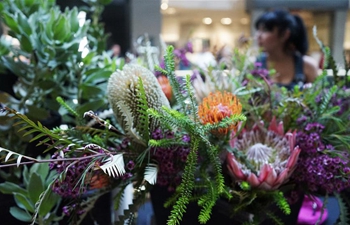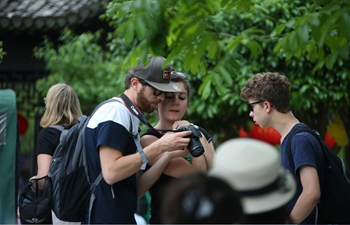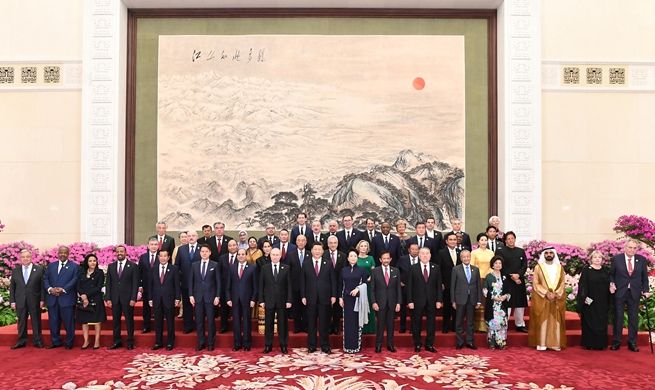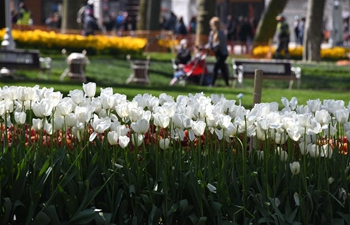LONDON, April 27 (Xinhua) -- A landmark British Library exhibition showcasing 5,000 years of writing history across the globe opened here on Friday.
Beginning with the origins of writing in Mesopotamia, Egypt, China and the Americas, the exhibition Writing: Making Your Mark charts the evolution of writing through technology and innovation, exploring more than 40 different writing systems, from the 5,000-year-old Jemdet Nasr clay tablet with very early cuneiform to digital typefaces and emojis.
Featuring an ancient wax tablet with a schoolchild's homework from the year of 100 to 199, and Florence Nightingale's diary alongside a 10th-century psalter, as well as a 60,000-strong petition from 1905 protesting against the first partition of Bengal, the exhibition highlights how writing can be personal, functional, beautiful or political and will challenge our preconceptions of what writing is through examples of writing as art, expression and instruction.
The woodblock-printed Diamond Sutra from Dunhuang, China, dating to the year of 868 and the earliest known printed book in the world, is one of the most important exhibits.
British Library's Chinese specialist Emma Harrison told Xinhua that woodblock printing is one of China's greatest inventions and legacies to the world.
Besides the Diamond Sutra, the British Library also displayed other Chinese exhibits such as Oracle Remnants, Shuowen Jiezi, ancient movable type printing and modern Chinese typewriters. It introduced the evolution of Chinese writing and printing from different angles across history.
With many items going on display for the first time, a 3,600-year-old Ancient Egyptian limestone monument covered in hieroglyphs, which contains a hymn to the god of the netherworld, Osiris, is the oldest item in the British Library.
In addition, William Caxton's first printing of The Canterbury Tales by Geoffrey Chaucer from 1476-77, which is the earliest substantial book printed in Britain, is also on display.
The exhibition "asks what the future holds for writing and how we will choose to make our mark in the decades to come," said Adrian Edwards, lead curator of the exhibition.
There will be a series of events inspired by the exhibition, featuring leading experts exploring everything from hieroglyphics and alphabets to typography and tattoo.
There will also be free school workshops, a range of inspiring adult courses including master classes on Japanese calligraphy and Ancient Greek, audio-description tours for visitors who are blind or partially-sighted and the Library's first autism-friendly private view of the exhibition.













